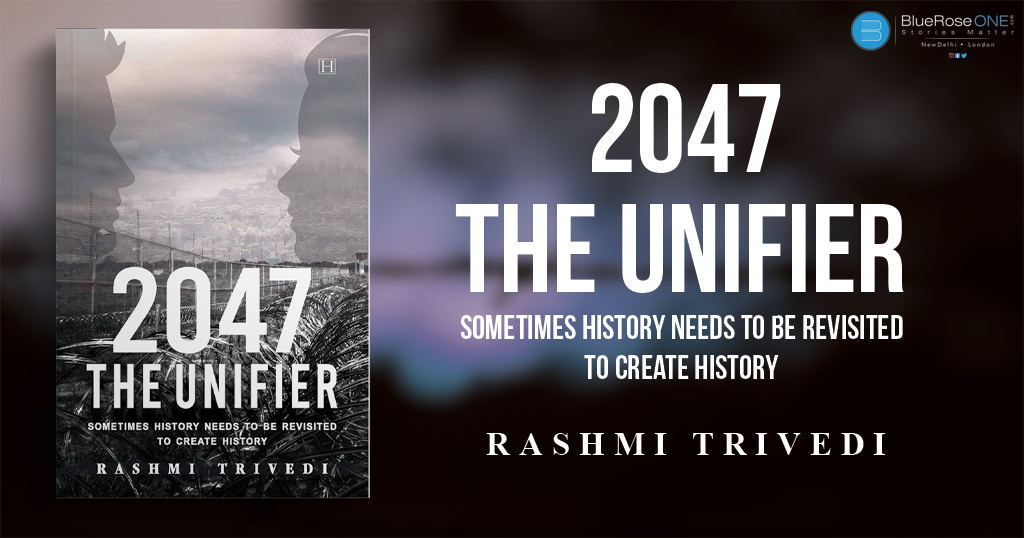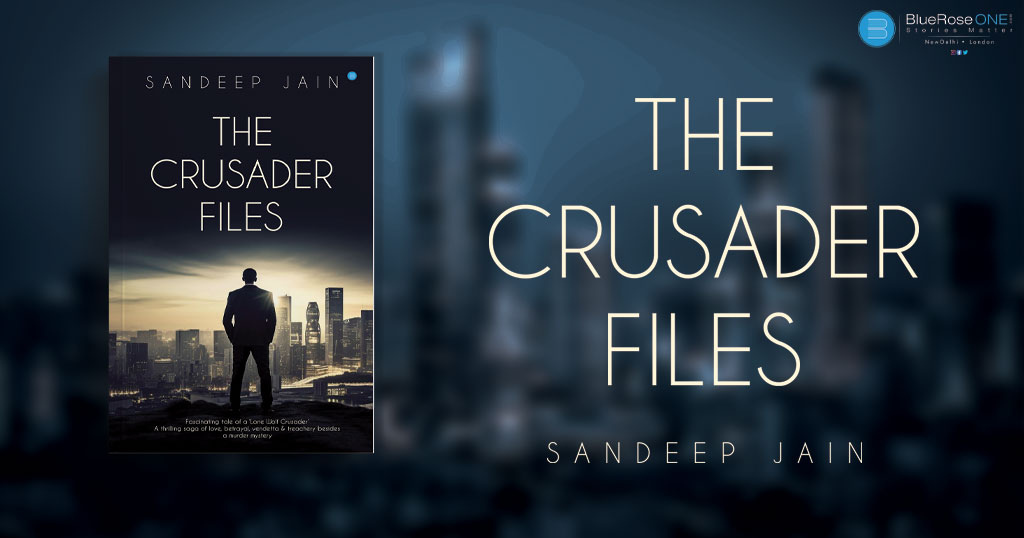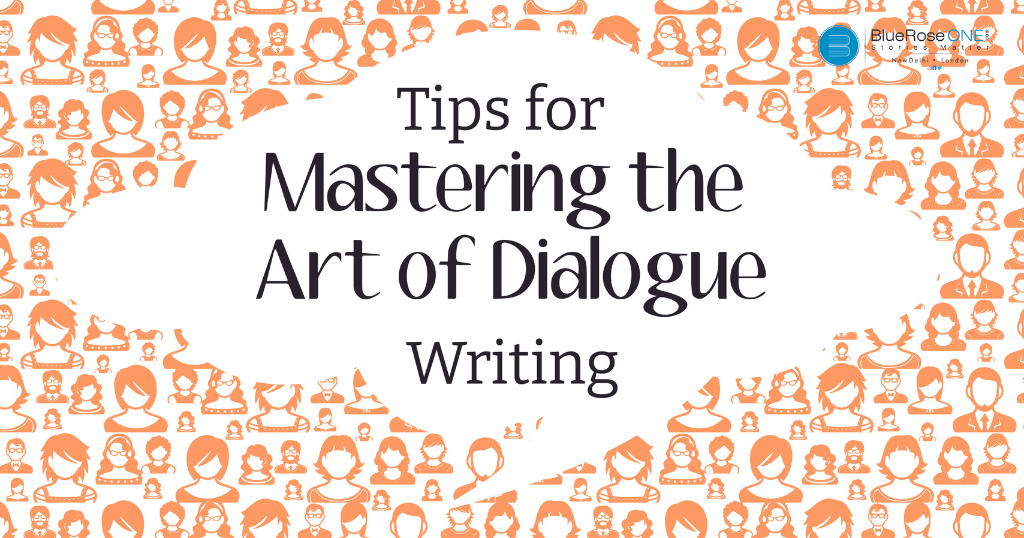
10 Tips for Mastering the Art of Dialogue in Writing
Effective dialogue is the lifeblood of any engaging piece of writing, be it a novel, a short story, or a screenplay. It’s the vehicle through which characters find their voices, stories come to life, and readers or viewers become immersed in the narrative. In the hands of a skilled writer, dialogue has the power to captivate, evoke emotion, and drive the plot forward. Many readers can recall their favourite literary or cinematic moments, not by long-winded descriptions or elaborate settings, but by the words that were spoken. These dialogues resonate because they were carefully crafted to reveal character, convey meaning, and stir emotions. Whether you’re an aspiring writer or a seasoned author looking to refine your craft, understanding the art of dialogue is essential. It’s not just about the words characters speak; it’s about the subtext, the unsaid, and the emotions that lie beneath the surface. In this blog, we will delve into ten invaluable tips that can help you master the art of writing compelling and authentic dialogue. Read: How to Overcome Writer’s Block: 10 Proven Ways to Unlock Your Creativity To write effective dialogue is to become a playwright, a psychologist, and a storyteller, all rolled into one. It’s about understanding your characters so deeply that their words become an extension of their very being. It’s about listening to the rhythms and nuances of real conversations, ensuring your dialogue feels genuine and relatable. The power of well-crafted dialogue cannot be overstated. It’s the difference between a story that falls flat and one that comes alive. These ten tips will serve as your guide, offering insights into character development, pacing, subtext, and more. With practice and patience, you’ll develop the skills to breathe life into your characters and stories, creating a connection with your readers that will keep them turning the pages or glued to the screen. So, whether you’re a novice wordsmith or a seasoned scribe looking to fine-tune your craft, let’s embark on a journey to uncover the secrets of mastering the art of dialogue in writing. Get ready to make your characters not just speak but come alive on the page. Understand Your Characters Eavesdrop and observe Show, don’t tell. Use subtext. Keep it concise. Pacing and Rhythm Use dialogue tags sparingly. Dialect and Accents Edit and revise Dialogue as Plot Driver 1. Understand Your Characters Characters are the heart and soul of any story, and their dialogue should be a direct reflection of who they are. To write compelling dialogue, you need to intimately know your characters. This includes their backgrounds, beliefs, quirks, motivations, and more. For example, consider the character of Sherlock Holmes in Sir Arthur Conan Doyle’s stories. His dialogue is marked by its logical precision, attention to detail, and occasional arrogance. This dialogue aligns with his character as a brilliant and analytical detective. Conversely, Dr. John Watson’s dialogue reflects his compassionate and steady nature. By understanding your characters at this level, you can ensure their dialogue is authentic and true to their unique identities. You may also like: How to Make Book Design More Appealing to the Reader 2. Eavesdrop and observe Writers are, by nature, keen observers of the world. To craft convincing dialogue, it’s crucial to pay attention to real conversations and interactions around you. Eavesdropping discreetly on people’s discussions in various settings, from coffee shops to public transportation, can provide invaluable insights into how people speak, gesture, and respond to one another. For instance, you might overhear a conversation at a bookstore where a customer passionately recommends a novel to a fellow reader. This genuine enthusiasm and persuasive tone can be integrated into a character’s dialogue when they are discussing their favourite book. The authenticity you gain from such observations enriches your writing and makes the dialogue relatable. 3. Show, don’t tell. One of the cardinal rules of writing applies to dialogue as well: show, don’t tell. This means that instead of directly stating a character’s emotions or intentions, you should use their words and actions to convey these elements. For example, in a story about a character dealing with grief, rather than having them say, “I’m sad,” you can illustrate their sadness through their behavior. They might avoid eye contact, speak in a subdued tone, or lose interest in activities they once enjoyed. By showing these manifestations of sadness, you allow readers to empathise with and connect with the character on a deeper level. 4. Use subtext. Subtext is the layer of unspoken meaning beneath a character’s spoken words. It adds depth and complexity to dialogue by implying thoughts, emotions, or intentions that are not explicitly expressed. Subtext can create tension, intrigue, and ambiguity. Imagine a scene in which two characters, Alice and Bob, are discussing a recent breakup. Alice says, “I hope you find happiness.” On the surface, this may seem like a kind sentiment, but the subtext might convey her lingering bitterness and disappointment in a more profound way. This unspoken tension between the characters adds depth to their interaction and intrigues the reader. You may also like: Never Say Goodbye a Book By Hilary Green 5. Keep it concise. Concise dialogue is typically more effective in conveying meaning and maintaining reader engagement. Real-life conversations often involve succinct and focused statements. Unless a character’s personality or the context of a scene warrant verbosity, it’s advisable to keep dialogue concise. For instance, if a character is delivering a critical piece of information to their team during a high-stakes mission, they wouldn’t provide an extensive backstory or use overly complex language. They’d deliver the information succinctly, emphasising its urgency and importance. This concise dialogue reflects the fast-paced nature of the situation and keeps readers engaged in the unfolding action. 6. Pacing and Rhythm Pacing and rhythm in dialogue are essential for controlling the flow and mood of your narrative. By varying the tempo of your character interactions, you can effectively convey tension, emotion, and character development. For example, in a high-stakes action scene, rapid-fire dialogue and short, urgent sentences can create a…
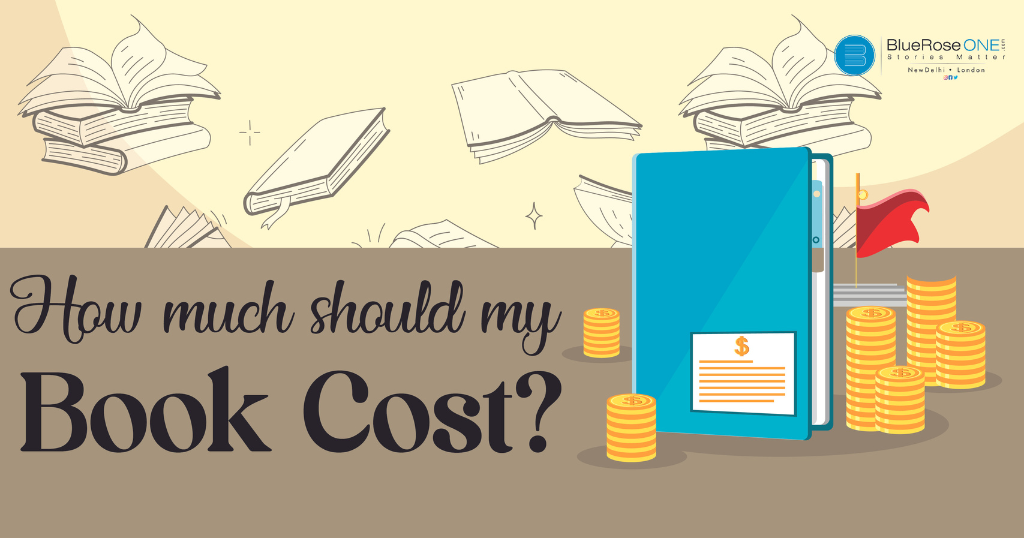
How Much Should My Book Cost? 7 Tips for Pricing Your Book
Setting the optimal price for your book is a pivotal component of the publishing journey. Navigating the delicate balance between recuperating costs, ensuring profitability, and resonating with your intended readership can be a formidable task. This comprehensive guide aims to demystify the intricacies of book pricing, offering insights into the factors that shape these decisions and providing actionable tips to empower authors to make well-informed choices. Understanding the costs Embarking on the journey of pricing your book necessitates a comprehensive understanding of the associated costs. Delving into the nuances of expenses, including printing, distribution, and other production-related outlays, is paramount. By unravelling the layers of these intricacies, authors can gain clarity on how to establish a price point that not only covers costs but also ensures a viable level of profitability. Factors Influencing Book Pricing Numerous variables exert influence on the pricing of a book, each playing a distinctive role in shaping the overall strategy. Genre, format, and target audience stand out as key determinants, and we’ll dissect each of these factors meticulously. By delving into the specifics of how genre dynamics, format choices, and the pulse of your readership intersect, authors can develop a nuanced approach to their pricing strategy. Genre Dynamics The genre in which your book resides significantly impacts its perceived value in the market. Genres carry distinct expectations, and readers often associate certain price ranges with specific genres. Understanding these genre dynamics empowers authors to position their work competitively while aligning with reader expectations. Format Choices The format in which a book is presented plays a pivotal role in shaping its perceived value. From paperback to hardcover, e-books to audiobooks, each format brings its own unique set of considerations. We’ll explore how the choices authors make regarding the presentation of their work influence pricing decisions and reader preferences. Target Audience Considerations Knowing your audience is fundamental to determining an effective pricing strategy. Different demographics may respond differently to varying price points. By tailoring your approach based on the characteristics and preferences of your target audience, you can strike a harmonious balance between affordability and perceived value. 7 Tips for Pricing Your Book: 1. Know Your Market: Understanding your target market is foundational to effective book pricing. Conduct thorough market research to discern the pricing norms within your genre. Analyse competitor prices and identify the range that aligns with reader expectations. By having a clear understanding of your market, you can strategically position your book for optimal visibility and appeal. 2. Consider Production Costs: Balancing reader affordability with covering production costs is a delicate art. Calculate the expenses associated with printing, distribution, and other production elements. Establishing a reasonable profit margin ensures sustainability. This tip guides authors to make informed decisions that not only benefit readers but also contribute to the overall success of the book. 3. Evaluate Your Book’s Unique Selling Proposition (USP): Beyond tangible costs, your book’s unique value proposition influences its perceived worth. Explore what sets your content apart—whether it’s groundbreaking insights, a distinctive writing style, or niche subject matter. Understanding your book’s USP empowers you to justify and optimise its pricing. 4. Analyse genre trends: Different genres carry distinct expectations when it comes to pricing. Dive into genre-specific pricing trends to align your book with market expectations. Recognise where your book fits within these trends to competitively position it while providing value to readers. 5. Factor in Book Length: The length of your book, whether a concise novella or an extensive saga, impacts pricing considerations. Offer guidelines based on word count and page numbers. This ensures that the pricing reflects the perceived value of the content, maintaining fairness for both the author and the reader. 6. Consider Your Author Status: First-time authors and established writers may approach pricing differently. Discuss strategies tailored to each scenario. For debut authors, pricing might involve gaining recognition, while established authors may leverage their reputation to command different pricing strategies. This tip recognises the diverse landscape authors navigate based on their standing in the literary world. 7. Leverage Discounts and Promotions: Explore the strategic use of discounts and promotional pricing to stimulate sales and expand your readership. Understand how these marketing tools can impact both short-term and long-term book success. Leveraging discounts and promotions is a dynamic approach that can contribute to increased visibility, reader engagement, and overall book sales. How do you decide the price of a book? Setting the right price for your book involves a nuanced understanding of various factors. Begin with a comprehensive analysis of production costs, including printing, distribution, and other associated expenses. Simultaneously, delve into market research to grasp the pricing landscape within your genre. Identify the unique selling points of your book—what sets it apart from others—and consider how these elements contribute to its perceived value. Striking a balance between covering costs, meeting market expectations, and aligning with your book’s unique value proposition is crucial for making informed pricing decisions. How much should I charge for a 300-page book? Determining the price for a 300-page book requires a strategic approach. Consider production costs, ensuring that the pricing covers expenses while remaining attractive to readers. Evaluate the genre-specific trends for books of similar length to position yours competitively. Additionally, factor in the unique elements of your content and your author status, as these contribute to the overall perceived value of the book. By carefully navigating these considerations, you can find the optimal price point for your 300-page masterpiece, offering readers value while maintaining profitability. How much should I charge for my first novel? For debut authors, pricing the first novel involves a delicate balance. Recognise that your primary goal may be gaining recognition and building an audience. Consider pricing strategies that align with your status as a new author, such as offering introductory discounts or promotions. Emphasise the unique qualities of your novel, and aim for a price that communicates value to readers while encouraging them to take a chance on a new voice in the literary landscape. This strategic approach can help debut authors find the right…
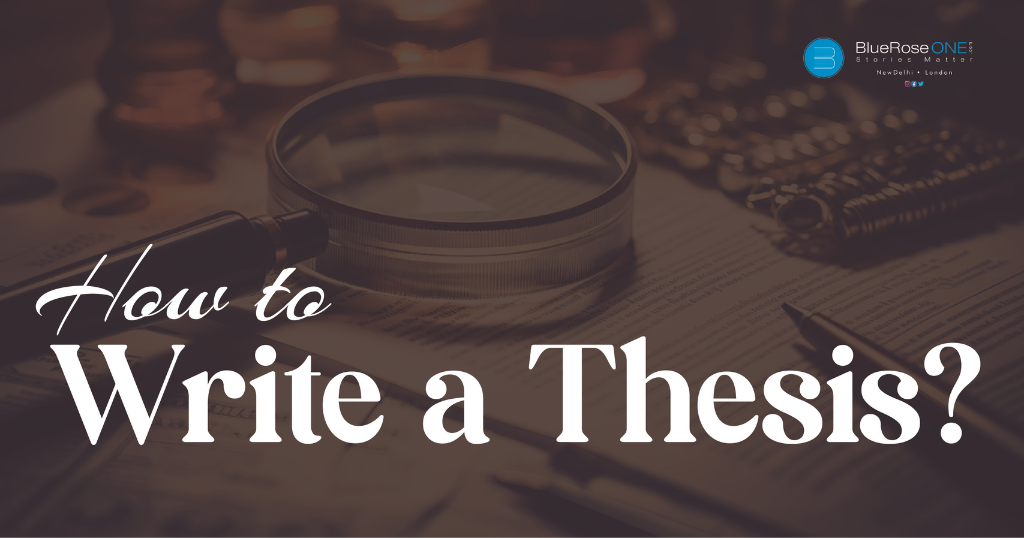
How to Write a Thesis: A Comprehensive Guide
Writing a thesis is a monumental task that many students and researchers face in their academic journey. It’s a rite of passage that demands dedication, research, and well-structured writing. Whether you’re a graduate student working on your master’s thesis or a doctoral candidate preparing a dissertation, this comprehensive guide will take you through the essential steps and provide you with tricks to ensure your thesis is a success. Section 1: Getting Started Starting your thesis can be a daunting but crucial step in your academic journey. Here are some key steps to kickstart your thesis-writing process: Choose your topic: Selecting a topic is the first and most vital step in writing a thesis. Opt for a subject that genuinely piques your interest. Your passion for the topic will provide the motivation and resilience needed throughout the often lengthy and demanding research and writing process. Research extensively: Once you’ve chosen your topic, dive into existing literature to gain a thorough understanding of it. This step is critical for identifying gaps or areas where your thesis can make a valuable contribution. A comprehensive understanding of the existing body of work is essential for meaningful research. Develop a research question: Formulating a clear and specific research question is the cornerstone of your thesis. This question will guide your research and provide focus. It should be well-defined, relevant, and designed to address an issue or explore a particular aspect of your chosen topic. Create a thesis timeline: Establishing a timeline with defined milestones is crucial for effective thesis planning. This timeline should encompass all phases of your thesis, from initial research to final writing and editing. Setting achievable goals and deadlines will keep you on track and help you manage your time effectively. Select your advisor: Choosing the right advisor or mentor is a pivotal decision. Your advisor will provide guidance, support, and valuable feedback throughout your thesis journey. Look for someone with expertise in your field with whom you can effectively collaborate. You may also like: Fatal Flaw: Definition, Types, Examples and More Crafting a good thesis is a meticulous process that necessitates careful planning and execution. Here are some tips to help you write a compelling and well-structured thesis: Clear and concise statement: Your thesis statement serves as the foundation of your work. It should be a clear, concise, and arguable declaration of your research’s central point. Every element of your thesis should relate to or support this statement, making it a vital aspect of your work. Organised structure: Structuring your thesis with clear chapters or sections, each focused on a specific aspect of your research, is essential. Use well-defined headings and subheadings for clarity and ease of navigation, helping your reader follow your arguments and findings. Literature review: A comprehensive literature review is crucial to establishing the context for your research. It demonstrates your awareness of existing scholarship and helps identify gaps in the field where your work can contribute. Your literature review should be well-structured and synthesise key findings from relevant sources. Original contribution: Highlight how your research makes an original and meaningful contribution to your field. Emphasise the novel aspects of your work, whether it’s new data, fresh insights, or innovative methodologies. Clearly articulating your research’s unique value is essential. Methods and data: Describe your research methods and data collection processes thoroughly. Ensure that your methods are well-suited to address your research question. Accurate data presentation is critical, as it forms the basis for your analysis and findings. Analysis and interpretation: In this section, delve into a comprehensive analysis of your data. Discuss the implications of your findings and how they relate to your research question and thesis statement. Your analysis should be insightful and clearly presented. Citations and references: Properly cite all sources you use in your thesis and create a well-structured reference list. Adhering to citation styles consistently is vital to maintaining academic integrity. Proofread and edit: Before finalising your thesis, dedicate time to meticulous proofreading. Eliminate grammatical errors and typos, and ensure clarity in your writing. Consider engaging a professional editor for a comprehensive review to enhance the overall quality of your work. Section 2: Crafting Your Thesis What are the three parts of a thesis statement? A thesis statement typically consists of three parts: Introduction: This section provides an overview of the topic and presents the research question or problem. Body: The body of the thesis contains the main arguments, evidence, and analysis that support the thesis statement. Conclusion: The conclusion summarises the key findings, their implications, and their relevance to the research question. You may also read: The 7 Best Fantasy Book Series of All Time What is the first sentence of a thesis? The first sentence of your thesis is often an introductory sentence that sets the stage for the entire work. It should introduce the topic, provide some context, and lead into your thesis statement. A compelling first sentence can grab your reader’s attention and make them eager to explore your work further. What is a good sentence starter for a thesis? A good sentence starter for a thesis can vary depending on your field and the nature of your research. However, some common sentence starters include: “This thesis examines…” “The purpose of this study is to…” “In this research, we investigate…” “Our study aims to understand…” “The central question addressed in this thesis is…” Choose a sentence starter that aligns with your research and provides a clear introduction to your topic. You may also like: What is Cozy Mystery? A Beginner’s Complete Guide How do you start an introduction for a thesis statement? Your thesis introduction should engage your reader and provide a clear framework for your research. Here’s how to start an effective introduction: Hook the Reader: Begin with a compelling anecdote, a surprising fact, a relevant quote, or a thought-provoking question to grab your reader’s attention. Provide Context: Introduce the broader context of your research area and highlight the significance of your topic. State the Problem or Research Question: Clearly present the problem…
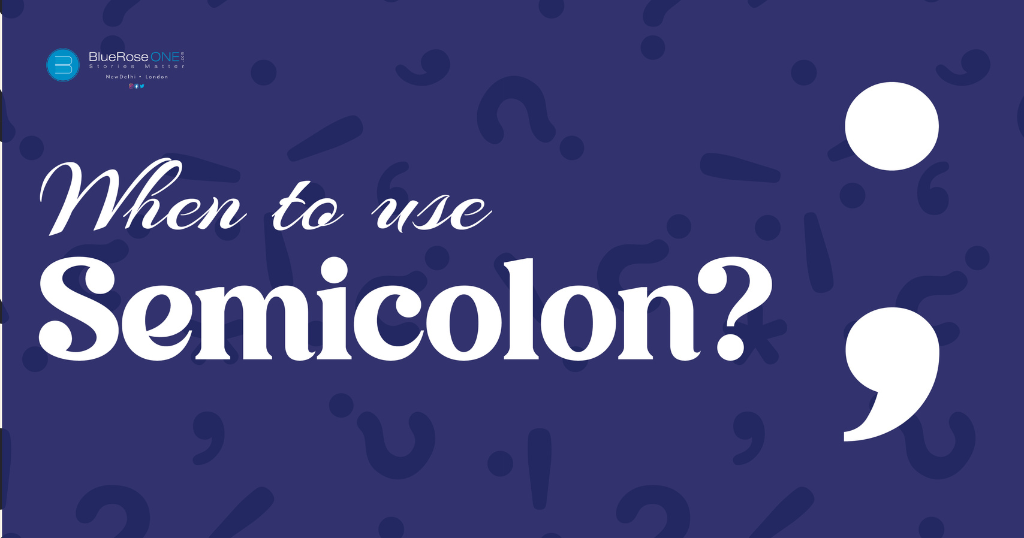
Learn When to Use Semicolons: Rules and Examples
Semicolons can be a source of confusion for many writers. They occupy a middle ground between commas and periods, offering a unique way to connect and separate clauses in a sentence. Understanding when and how to use semicolons is essential for improving your writing’s clarity and style. In this comprehensive guide, we’ll explore the rules governing semicolon usage, provide examples, and answer frequently asked questions. By the end, you’ll be equipped with the knowledge and confidence to use semicolons effectively in your writing. Read: How to do Character Development: Bringing Your Characters to Life The Basics: What Is a Semicolon? A semicolon is a punctuation mark that serves two primary functions: To connect closely related independent clauses. To separate items in a list when those items contain internal commas. Let’s delve into each of these functions to gain a deeper understanding of semicolon usage. 1. Connecting Independent Clauses One of the most common uses of semicolons is to connect closely related independent clauses—clauses that could stand alone as separate sentences but are linked in meaning. Here’s the basic rule: you can use a semicolon to join two independent clauses that are closely related in thought, creating a smoother and more concise sentence structure. Examples: I love to write; it’s a form of creative expression. She excels at mathematics, and her problem-solving skills are exceptional. The sun was setting, and the sky turned a beautiful shade of pink 2. Separating Items in a List with Internal Commas Semicolons are also useful when you have a list of items, and some of those items contain internal commas. In such cases, semicolons are used to clearly separate the items and avoid confusion. You may also like: How to Publish a Book? | Publish a Book | BlueRoseOne Examples: The conference will be attended by writers from New York, New York; Los Angeles, California; and Chicago, Illinois. The ingredients for the recipe include flour, sugar, and eggs; butter, salt, and milk; and chocolate chips. Using Semicolons: Rules and Examples The semicolon is a frequently misunderstood punctuation mark. While many writers are comfortable with the basics, such as separating independent clauses or items in a list, the nuances of semicolon usage can be more challenging. In this guide, we will delve into the intricacies of semicolon usage, providing you with a thorough understanding of when and how to use this versatile punctuation mark. Part 1: Joining Independent Clauses Semicolons can be employed to join two closely related independent clauses. When using a semicolon in this manner, it is crucial to ensure that the clauses are of roughly equal importance and relate to the same topic. Semicolons work well when you want to demonstrate a stronger connection between two sentences than a period would provide, without relying on conjunctions like “and” or “but.” Let’s look at an example: Example: “The rain began to fall; I ran for cover.” In this sentence, the semicolon is used to connect two independent clauses. The first clause, “The rain began to fall,” and the second clause, “I ran for cover,” are closely related. Using a semicolon here emphasises the connection between these two actions, indicating that seeking shelter is a direct response to the rain. Semicolons are an excellent choice when you want to highlight the relationship between independent clauses without using coordinating conjunctions like “and,” “but,” “for,” “so,” or “yet.” They offer a middle ground between the firm separation of a period and the closeness of a conjunction. Part 2: Separating Items in a List with Internal Commas Another important use of semicolons is to separate items in a list when the items themselves contain internal commas. This is particularly valuable when you want to maintain clarity and distinguish between individual list elements. Let’s examine an example: Example: “The authors include Jane Austen, ‘Pride and Prejudice’; F. Scott Fitzgerald, ‘The Great Gatsby’; and George Orwell, ‘1984’.” In this instance, semicolons are used to clearly separate the authors and their respective works, each of which contains a comma within the title. This usage prevents any potential confusion that could arise from the internal commas in the list elements. Part 3: Three Common Situations to Use a Semicolon Now, let’s delve deeper into three common situations in which you should use a semicolon in your writing. Situation 1: Connecting Closely Related Ideas One of the most valuable uses of a semicolon is to connect two closely related ideas. This occurs when you wish to emphasise the relationship between two independent clauses without resorting to coordinating conjunctions like “and,” “but,” “for,” “so,” or “yet.” Consider the following example: Example: “The moon rose over the horizon; the night was clear and serene.” In this case, the semicolon serves to convey the strong connection between the moon rising and the clear, serene night. The absence of a conjunction adds a sense of continuity and coherence to the narrative. It’s as if the two clauses are intimately linked, allowing the reader to appreciate the beauty of the night as it unfolds. You may also like: What is a Preface? Key Characteristics with Examples Situation 2: Separating List Items with Internal Commas As mentioned earlier, semicolons are invaluable when separating items in a list that themselves contain internal commas. This practice aids in avoiding confusion and clearly demarcating the separation between list elements. Let’s explore this in greater detail: Example: “We need to visit the following cities on our road trip: New York, New York; Los Angeles, California; and Chicago, Illinois.” In this instance, the semicolons play a crucial role in distinguishing the cities listed for the road trip. The internal commas within the city names could potentially create ambiguity if not for the semicolons. By using semicolons, we ensure that each city is distinct and easily identifiable, contributing to the overall clarity of the sentence. Situation 3: In Place of a Conjunction Semicolons can also replace conjunctions like “and” or “but” to join two closely related independent clauses. This technique helps vary your sentence structure and creates…
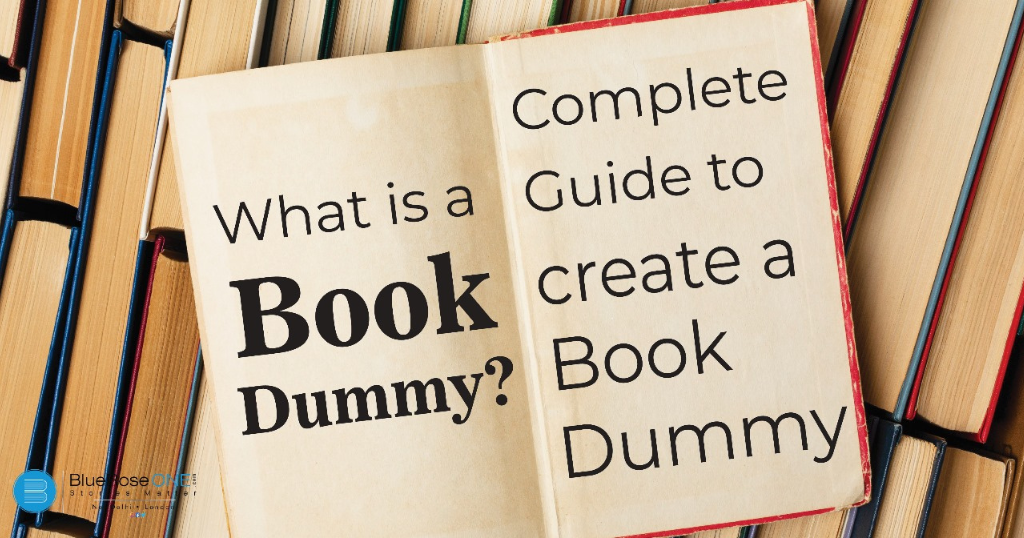
What is a Dummy Book ?
So, you’ve got an incredible story or idea for a book, and you’re ready to bring it to life. But where do you start? Enter the book dummy, a crucial tool in the world of publishing. In this comprehensive guide, we’ll explore what a book dummy is, why it’s important, and how you can create one to turn your literary dreams into reality. Read: A Complete Guide on How to Make Your Book an International Bestseller What is a Book Dummy? What do you mean by “Book Dummy”. A book dummy, often referred to as a mock-up or prototype, is a preliminary version of a book that serves as a visual representation of the final product. It’s not just a regular manuscript; it includes layout, design, and sometimes even illustrations. The primary purpose of a book dummy is to give the author, illustrator, or publisher a tangible preview of how the finished book will look and feel. Why are book dummies important? Book dummies offer several advantages: What Is the Format of a Dummy Book? The Anatomy of a Book Dummy A book dummy typically includes the following elements: Physical vs. Digital Dummies Book dummies can be physical or digital, depending on your needs and resources. Physical dummies are printed and bound, giving you a tactile experience of the book. Digital dummies are created using software and can be easily shared with collaborators, publishers, or for self-publishing You may also like: Fantasy books complete publishing guide in india 2024 Creating Your Book Dummy Step-by-Step Guide Tools and Resources for Creating a Book Dummy Read: Facebook Book Marketing: 7 Steps on How to Promote Your Book on Facebook Creating a book dummy is an essential step in the journey from idea to published work. Whether you dream of traditional publishing or self-publishing, a well-crafted book dummy will guide you through the process, ensuring that your vision becomes a reality. So, grab your creativity and start crafting that masterpiece; the literary world is waiting for your story.
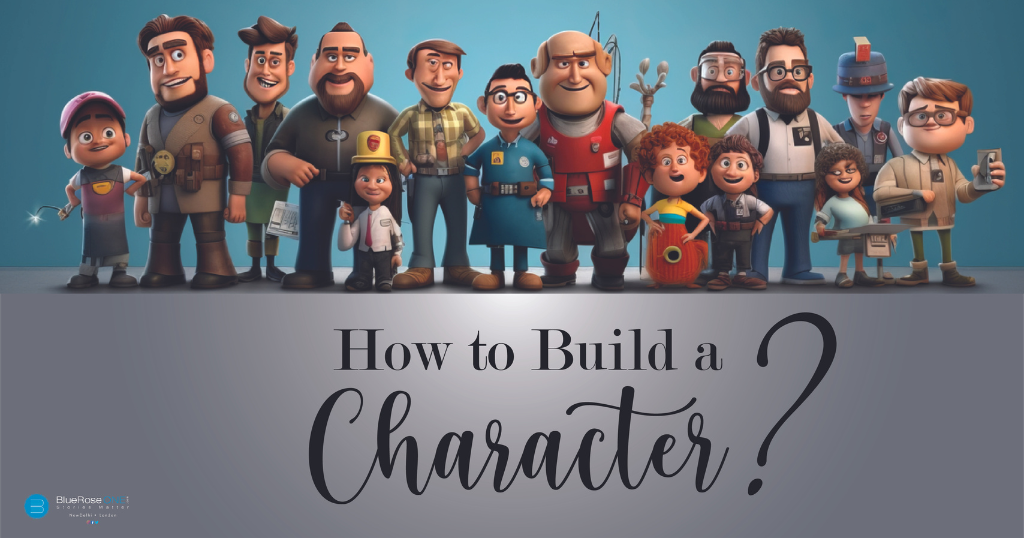
How to do Character Development: Bringing Your Characters to Life
In a world where reality is fictionized to make up for the lack of resonance, characters are made to be our comfort zones. In a book, a character is a fictional person, being, or entity created by the author to play a role within the story. Characters are central to the narrative and are typically individuals with their own personalities, backgrounds, motivations, and complexities. They can be protagonists, antagonists, supporting characters, or even minor characters, each serving a specific function in advancing the plot, conveying themes, or providing depth and context to the story. A well-developed character is not just a name and a physical description; it is a multi-dimensional entity with emotions, desires, flaws, and a unique voice. Readers or viewers engage with these characters, forming connections and emotional attachments as they follow the characters’ journeys and growth throughout the book. Read: How to Beautify Your Book’s Back Cover Design: A Step-by-Step Guide The portrayal and development of characters play a pivotal role in making a story relatable and compelling to the audience. There are many characters who have become our favourites, whether they are the main leads or supporting characters. But why and how does that happen? Why do we connect with them? Why do we feel what they feel? It is pretty simple. Because they are written so well and enigmatically, they draw us towards them. In this blog post, we will be going in depth as writers and readers as to how a character is built to be a fan’s favourite. Protagonist: Zero until the writers make them heroes. The protagonist is the central character around whom the story revolves. The protagonist is typically the character whose journey, challenges, and growth the narrative primarily focuses on. They are often the characters with whom the reader or audience is meant to identify or empathize. The protagonist is at the forefront of the story’s action and is usually involved in the major conflicts or dilemmas that drive the plot forward. The role of the protagonist can vary from one story to another. In some cases, the protagonist is a hero or a character with admirable qualities, while in others, the protagonist may be more complex, with both strengths and flaws. Protagonists can come in various forms, including heroes, anti-heroes, and everyday individuals. Their character development and their journey through the story are central to the overall narrative structure. Developing a protagonist’s character to be realistic and relatable is a cornerstone of crafting a compelling narrative. To achieve this, it’s imperative to create a character with depth and complexity. A one-dimensional, flawless protagonist can alienate readers, as they may struggle to identify with such perfection. Instead, imbue your main character with a rich backstory that informs their present actions and motivations. Read: How to pick between Paperback, Hardcover, eBook – What’s best for you? Explore their strengths and weaknesses, ensuring that their flaws are as apparent as their virtues. These imperfections make characters more relatable and human. Clearly define your protagonist’s motivations and goals, as these desires are what drive the plot forward. The protagonist should undergo both internal and external conflicts, wrestle with moral dilemmas, and experience moments of self-doubt. Crafting a well-thought-out character arc is essential, showcasing their evolution throughout the story. By allowing your protagonist to grow and change in response to their experiences, you invite readers to join them on a journey of self-discovery and transformation. Infuse the character with a unique voice, use dialogue and interactions to reveal their personality, and remember to “show, don’t tell.” Ultimately, relatability comes from the protagonist’s humanity, vulnerabilities, and the authenticity of their struggles. It’s this relatability that forges a strong connection between the character and the reader, ensuring their immersion in the narrative. Antagonist: Readers’ Guilty Pleasure and Writers’ Dark Side The antagonist is a character or force that opposes the protagonist, creating conflict and tension within the story. The antagonist serves as the primary source of opposition and stands in the way of the protagonist’s goals or desires. They are often responsible for creating obstacles, challenges, and dilemmas that the protagonist must overcome, driving the plot forward and providing a central source of conflict. Antagonists come in various forms and can be complex characters with their own motivations, or they can be more one-dimensional figures whose primary purpose is to act as an obstacle to the protagonist’s journey. Some antagonists may be villains, but not all antagonists are necessarily evil or malevolent; they simply have goals or interests that conflict with those of the protagonist. The role of the antagonist is essential in shaping the narrative and helping to reveal the strengths and weaknesses of the protagonist. The tension and conflict generated by the antagonist are central to the story’s progression and often lead to character development and growth in the protagonist. Developing a realistic and relatable antagonist is a pivotal aspect of crafting a dynamic and engaging narrative. To achieve this, it is essential to delve deep into the character’s psyche. Start by defining their motivations and goals clearly, providing insight into what drives them. Avoid the clichéd, one-dimensional villain and opt for complexity, crafting a backstory that elucidates their evolution and choices. Develop a moral code that, while differing from the protagonist’s, remains consistent within their worldview, thus presenting moral dilemmas. Like the hero, the antagonist should possess flaws and vulnerabilities, rendering them human and relatable. It’s often these imperfections that generate empathy. Incorporate moments that allow readers to connect with the antagonist, showcasing their struggles and vulnerabilities. Consider granting the antagonist a character arc, offering opportunities for change and growth, and exploring their relationships with other characters. Reveal a range of emotions, from doubt to regret, and imbue them with humanising qualities, be they a sense of humour or moments of genuine care. In dialogue and monologues, provide insights into their mindset, always adhering to the “show, don’t tell” principle. Ultimately, creating an antagonist with depth and relatability adds layers to your story, making it more engaging and thought-provoking…
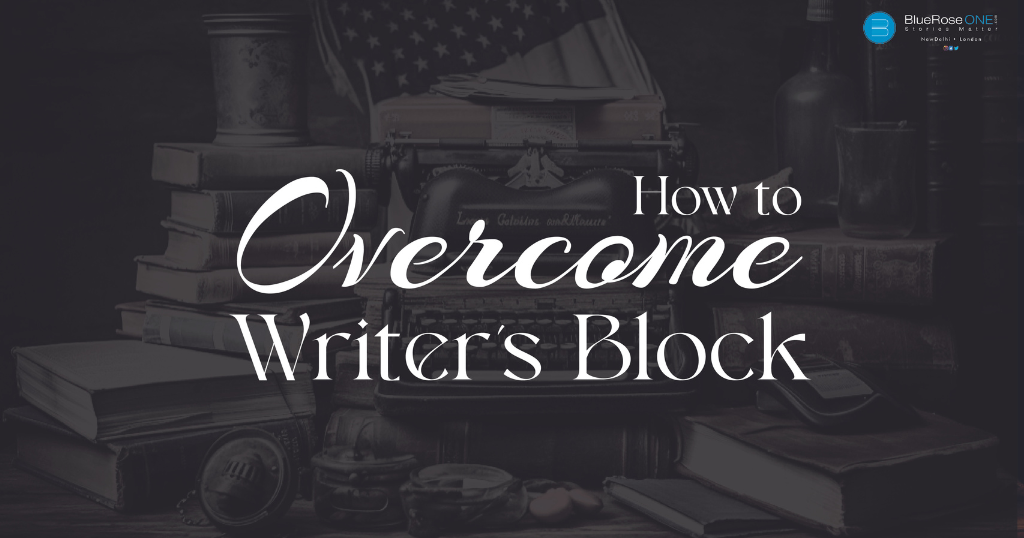
How to Overcome Writer’s Block: 10 Proven Ways to Unlock Your Creativity
Writer’s block is a term familiar to anyone who has ever attempted to express themselves through the written word. It is a frustrating and often paralysing condition when a writer finds themselves unable to produce new work or experiences a significant slowdown in their creative output. Read: Book Review – Think and Grow Rich a Book by Napoleon Hill. Writer’s block is a common phenomenon, affecting professional writers, students, bloggers, and even casual journal keepers. In this essay, we will explore the nature of writer’s block, its causes, and strategies to overcome it, as well as the importance of fostering a conducive creative environment. Understanding Writer’s Block Writer’s block is often described as a creative paralysis that can manifest in various forms. Some writers may experience a complete inability to start a new project, while others may be unable to continue an existing one. It can manifest as a lack of ideas, an inability to find the right words, or a general feeling of frustration and stagnation. Causes of Writer’s Block The causes of writer’s block are multifaceted and can vary from person to person. Here are some common factors contributing to this creative roadblock: Perfectionism: Writers who strive for perfection often impose impossibly high standards on themselves, setting an unrealistic bar for their work. This relentless pursuit of flawlessness can become a significant obstacle as it leads to self-criticism, self-doubt, and an intense fear of falling short of these lofty expectations. The result is often creative paralysis, where the writer struggles to put words on paper, constantly revising and critiquing their work instead of progressing. Fear of Failure: The fear of producing subpar work is a common affliction among writers. This fear can be paralysing, causing self-doubt and anxiety that hinder the writing process. Writers may avoid writing altogether to evade the possibility of failure, even though imperfection is an inherent part of the creative process. Overcoming this fear is crucial to breaking free from writer’s block and allowing creative expression to flow. Lack of Inspiration: A writer’s block can be triggered by a lack of fresh ideas and inspiration. When a writer feels uninspired or creatively drained, it can be debilitating. The absence of a creative spark makes it challenging to start or continue writing. Overcoming this obstacle often requires actively seeking inspiration from various sources, exploring new experiences, and rekindling one’s passion for writing. External Distractions: A conducive writing environment is crucial for maintaining focus and creativity. External distractions, such as noisy surroundings, interruptions, or a cluttered workspace, can disrupt the creative flow. These distractions divert the writer’s attention away from the task at hand, making it difficult to concentrate on writing. Creating a quiet and distraction-free space is essential to combating this hindrance. Procrastination: Procrastination is a common enemy of productivity and creativity. Putting off writing tasks leads to a buildup of anxiety and frustration. The longer a writer delays, the more daunting the task can become. This avoidance behaviour can create a cycle of anxiety that makes it even harder to start or continue writing. Breaking the habit of procrastination requires discipline and time management skills. Overworking: An excessive workload, often compounded by unrealistic deadlines, can lead to mental exhaustion and creative burnout. When writers push themselves too hard and don’t allow for breaks and relaxation, they may find their creativity stifled. Overwork can contribute to writer’s block by depleting the mental and emotional reserves needed for effective writing. Balancing workloads and setting achievable deadlines are essential to preventing this form of creative stagnation. Importance of a Conducive Creative Environment Creating an environment conducive to creativity is essential for preventing and overcoming writer’s block. Here are some key elements to consider: Physical Comfort: Creating a comfortable and ergonomic writing environment is essential for maintaining focus and productivity. A comfortable chair ensures that you can write for extended periods without physical discomfort. Good lighting minimises eye strain and supports alertness. An organised workspace reduces clutter and promotes efficiency. By eliminating physical distractions and discomfort, you can concentrate on your writing, allowing ideas to flow more freely and reducing the likelihood of writer’s block. Inspiration: Surrounding yourself with inspirational elements can significantly enhance your creative output. Objects, books, art, or mementos that resonate with your interests and passions serve as visual cues that trigger your creativity. They can remind you of the reasons you love writing and provide a source of motivation. When you encounter obstacles, these inspirational items can reignite your enthusiasm and help you push through creative challenges. Supportive Routine: Establishing a consistent writing routine is a powerful tool for overcoming writer’s block. Designated writing times condition your mind to be creative during those periods. It becomes a signal to your brain that it’s time to focus and produce. Having a routine also provides a sense of stability and predictability, reducing anxiety and resistance to starting or continuing your writing projects. Minimise Distractions: Distractions can be one of the most significant impediments to productivity and creativity. Minimising distractions, whether it’s silencing your phone, finding a quiet writing space, or using website blockers to stay off social media, is crucial. Clearing your environment of potential interruptions allows you to maintain deep concentration on your work. This heightened focus enables the creative flow to flourish and keeps writer’s block at bay. Healthy Lifestyle: A healthy lifestyle directly influences your mental clarity and creative capacity. Regular exercise increases blood flow to the brain, improves cognitive function, and reduces stress. A balanced diet with proper nutrition supports brain function and energy levels. Sufficient sleep is essential for cognitive rejuvenation, memory consolidation, and problem-solving abilities. By maintaining a healthy lifestyle, you optimise your mental and physical well-being, providing a solid foundation for creativity and reducing the likelihood of writer’s block. Learn to Overcome Writer’s Block in 10 Simple Ways and be Creative for Your Writings. Now, we’ll explore ten proven ways to overcome writer’s block, igniting your creative spark and getting those words flowing again. Embrace Freewriting Change your writing…
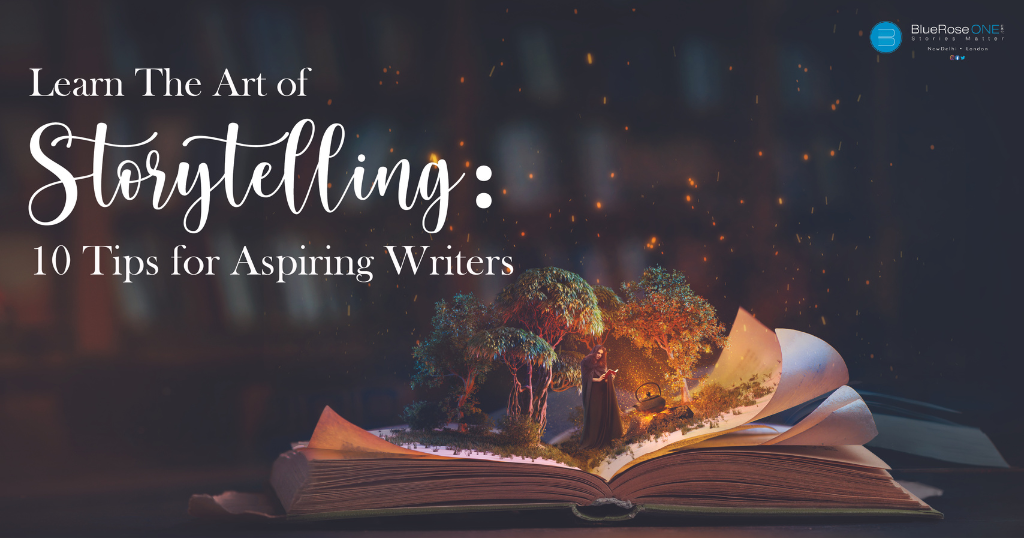
Learn the Art of Storytelling: 10 Tips for Aspiring Writers
Storytelling is an ancient and powerful craft that has been a fundamental part of human culture for millennia. From cave paintings to epic poems, oral traditions to novels, storytelling has evolved and adapted over the years, but its essence remains the same: to captivate, entertain, inform, and inspire. Read: A Complete Guide on How to Make Your Book an International Bestseller If you’re an aspiring writer looking to master the art of storytelling, you’ve come to the right place. In this digital age, where stories are told through various mediums, including books, films, podcasts, and social media, understanding the core principles of storytelling is more important than ever. In this article, we’ll explore ten tips to help you become a better storyteller and provide examples to illustrate each point. The art of storytelling is a skill that can be learned and perfected over time. Whether you’re writing a novel, creating a digital narrative, or using storytelling in marketing, these ten tips will serve as a solid foundation for your storytelling journey. Remember that practice, persistence, and a willingness to learn from both successes and failures are keys to becoming a masterful storyteller. By honing your craft, you can captivate your audience, share your message, and leave a lasting impact through the art of storytelling. So, go ahead and embark on your storytelling adventure; your audience is waiting to be enchanted by your words.

